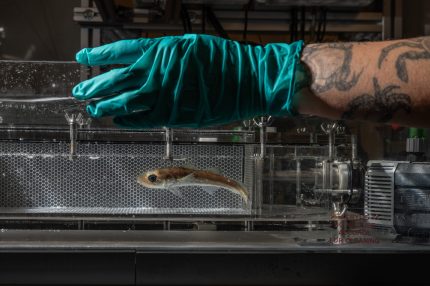OCTOBER 1
SCIENTIFIC WORKS
Feeding Polar cod
One of the fun tasks for our PhD students is to feed the Polar cod (Boreogadus saida)! They need three meals a week which is totally enough, but they’re quite insatiable – if they could have unlimited food, they would have it! Max Willems pre-packaged the food for each fish tank, so it just has to be defrosted a bit for a nice, filling meal. The fish get a mix of krill and squid, and the amount of food varies with the season. In winter they eat a bit less than in summer. All fish tanks get the same amount of food, regardless of the seawater temperature the fish are kept in.

Polar cod are quite opportunistic feeders, eating whatever they can find. Sometimes they eat other fish, but most of the time they eat small copepods and amphipods. With increasing water temperatures and a possible change of composition of the Arctic food web, Polar cod could potentially be in trouble in the future. There have been reports of Polar cod eating algae, but algae is likely not filling and nourishing enough in the long term.
Max and YESSS do not specifically look at the Polar cod’s diet, as we keep the animals in aquaria and know exactly what we feed them. We do keep track of all the individual fish’s lengths and weights. The fish have a small tag comparable to a chip you would get for a cat or dog at the vet implanted. It can be read out, so the history of each fish is available. There is a possibility that fish kept in warmer seawater burn through their food quicker, because they are more active in higher temperatures. We will know whether this is true when the data has been analysed.
